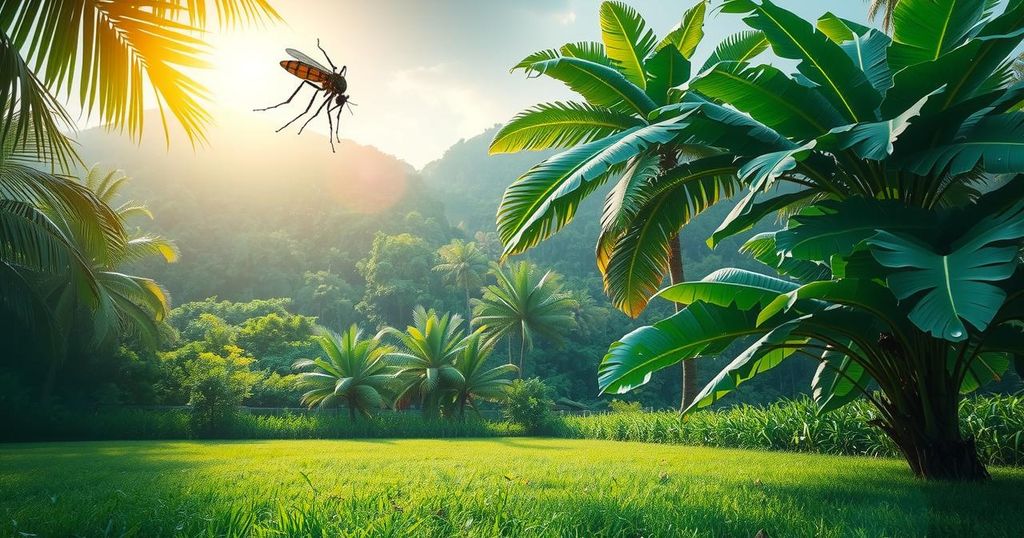A study led by Professor Kim Jae Kyoung reveals that temperature and rainfall significantly influence the spread of dengue fever. The research highlights the necessity of understanding these climatic factors to develop effective strategies for mitigating the disease. An alarming increase in dengue cases underscores the urgency of addressing the complex relationship between weather patterns and dengue dynamics across regions.
Recent research led by Professor Kim Jae Kyoung from KAIST sheds light on the weather factors influencing dengue fever’s global spread. The study highlights temperature and rainfall as pivotal elements causing the uptick in dengue cases while proposing strategies to mitigate the disease’s impact. The World Health Organization reported a rise in dengue cases from 4.1 million in 2023 to over 10.6 million in 2024 across the Americas, marking a historical peak and emphasizing the need for further investigation into climatic influences on dengue dynamics.
Despite known climatic impacts, the interplay between temperature and rainfall regarding dengue transmission has lacked clarity. Previous research indicated varying effects of rainfall, with some studies claiming it accelerates transmission while others assert it does the opposite. The IBS team posited that inconsistencies arose from traditional methodologies that only considered linear relationships. By employing a more advanced framework called GOBI (General ODE-Based Inference), the researchers could analyze nonlinear and interactive effects of weather on dengue incidence.
The study was conducted across 16 diverse climatic regions of the Philippines, revealing distinct dengue regulation patterns linked to temperature and rainfall interplay. Notably, rising temperatures consistently correlated with increased dengue cases, while the effects of rainfall differed by region. In the eastern areas, rainfall heightened dengue incidence, whereas it suppressed cases in the west due to the length of the dry season influencing mosquito breeding sites.
The analysis uncovered that variations in dry season length played a vital role in dengue dynamics. In regions with shorter dry seasons, rainfall reduced mosquito breeding sites by flushing out stagnant water. Conversely, regions with longer dry seasons experienced increased mosquito populations as sporadic rainfall created new breeding sites. This detail, previously overlooked, adds depth to the understanding of the relationship between rainfall and dengue transmission.
First author Olive R. Cawiding remarked, “Our findings provide robust evidence for how climatic factors influence dengue transmission in diverse environments. This represents a significant step toward understanding how climate change may impact mosquito-borne diseases globally.” The current research allows for more targeted dengue intervention strategies, emphasizing the need for persistent actions in regions with considerable dry season variations while streamlining efforts in areas with natural relief mechanisms.
Furthermore, the study calls for the monitoring of dry season length as a predictor for dengue outbreaks. By tailoring public health resources to the unique climate patterns of each region, agencies can enhance their response to dengue outbreaks. This research not only broadens understanding of dengue fever but also aids in comprehending other climate-sensitive diseases, including malaria, influenza, and Zika virus.
CI Kim Jae Kyoung noted, “This research is crucial as it overcomes the limitations of traditional methods for detecting nonlinear relationships and clearly elucidates the complex interactions between climatic variables and infectious diseases.” While the study presents significant insights, researchers recognize the need for more detailed data, such as mosquito population statistics and socioeconomic factors, to further refine their findings in the context of dengue fever.
The research emphasizes the critical role of climatic conditions, particularly temperature and rainfall, in influencing dengue fever transmission. The findings extend an understanding of the disease’s dynamics, advocating for tailored intervention strategies based on specific regional climatic patterns. By monitoring dry season variations, public health agencies can allocate resources more effectively to combat dengue outbreaks, showcasing the need for continued research into climate-dependent health issues.
Original Source: www.technologynetworks.com






